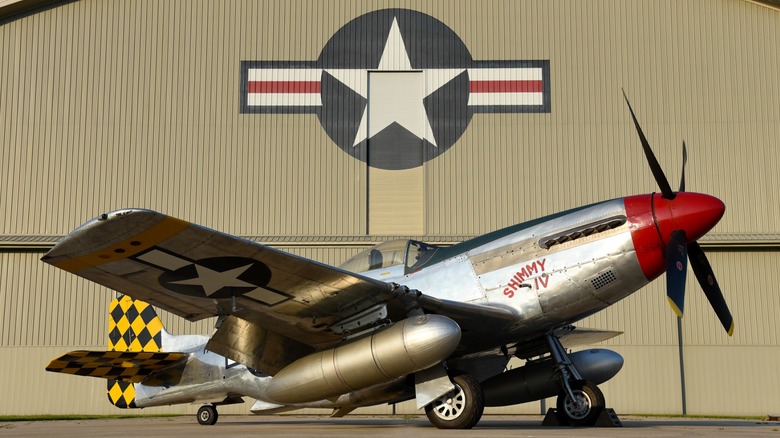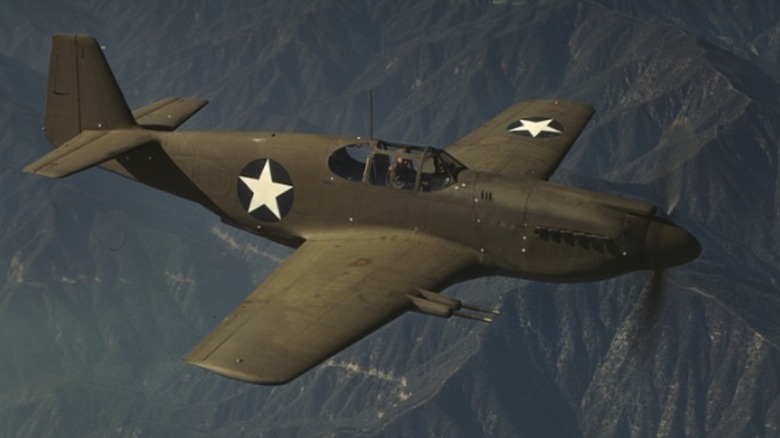Who Made The P-51 Mustang, And Where Was It Built?
Easily one of the most famous warplanes in history, the P-51 Mustang was manufactured by North American Aviation (NAA). North American, as it is often called, was originally formed as a holding company focused on buying and selling interests in aviation companies in 1928. General Motors became North American's parent company in 1933, and by 1934, NAA had transitioned to a manufacturing company. Over the years, NAA would produce a long line of fighters, bombers, and training aircraft for the U.S. military and its allies before finally becoming part of the Boeing Aircraft Company through a series of corporate mergers.
North American began production of the P-51A Mustang at its Inglewood, California, production plant. As the war effort ramped up, and the P-51B model was introduced, NAA enlisted its production facilities located near Dallas, Texas. In all, over 15,000 P-51 Mustangs were built and served in a number of Air Forces around the world.
The P-51 Mustang timeline
Production of the P-51 Mustang began in 1940 at the request of the British Royal Air Force (RAF) to replace its outdated, and out-gunned, Curtiss P-40 Warhawk. The earliest P-51s were powered by an Allison V-1710 V12 engine. However, the Mustang was soon fitted with a supercharged Rolls-Royce V12, nicknamed the "Merlin," one of the secrets that allowed the P-51 Mustang to dominate the skies.
The P-51D, introduced in mid-1944, was powered by a Packard V1650-7, an upgraded version of the Merlin V12 built under license from Rolls-Royce. The P-51H was lighter than the previous Mustangs which enabled it to fly 50 mph faster than P-51D. Finally, the P-51K was similar to the "D" except with a four blade propeller.
North American P-51 Mustangs were still valuable assets to the U.S. Air Force even after the advent of jet fighter-bombers. For example, during the Korean War, the Air Force units closest to the conflict were based in Japan. The Mustang, redesignated as F-51 due to their transfer to Reserve and Air National Guard units, had enough range to hit Korean enemy targets, whereas the Air Force's F-80 fighter jets could not. Ultimately, the Mustang was replaced as a front-line fighter by the F-86F jet fighter-bomber near the end of the Korean War in 1953, although they continued to serve in a secondary capacity until 1957.

